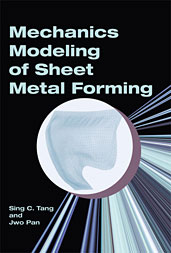Journal Article
A Variable-Size Local Domain Approach to Computer Model Validation in Design Optimization
2011-04-12
2011-01-0243
A common approach to the validation of simulation models focuses on validation throughout the entire design space. A more recent methodology validates designs as they are generated during a simulation-based optimization process. The latter method relies on validating the simulation model in a sequence of local domains. To improve its computational efficiency, this paper proposes an iterative process, where the size and shape of local domains at the current step are determined from a parametric bootstrap methodology involving maximum likelihood estimators of unknown model parameters from the previous step. Validation is carried out in the local domain at each step. The iterative process continues until the local domain does not change from iteration to iteration during the optimization process ensuring that a converged design optimum has been obtained.

